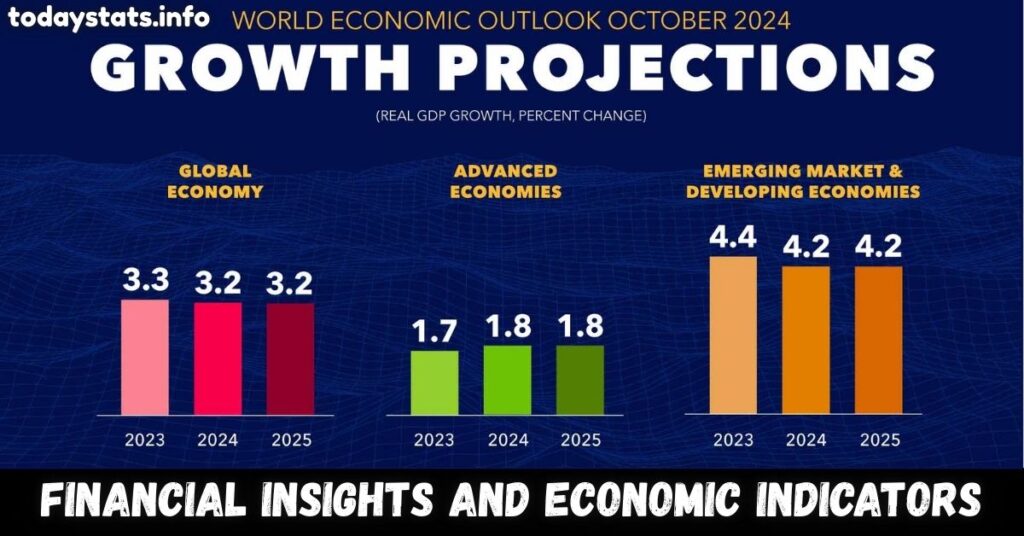The digital landscape is evolving rapidly. Shopnaclo emerges as a game changing solution for modern businesses. Every enterprise today faces unprecedented challenges in maintaining competitive edge. Market dynamics shift daily, requiring agile responses. Shopnaclo provides the necessary data driven framework to navigate these complexities.
Business leaders recognize the value of actionable insights. Strategic decisions now rely on accurate analytics more than ever before. The marketplace demands innovation at breakneck speeds. Companies must adapt or risk obsolescence in today’s economy.
Customer expectations have reached all time highs. The modern consumer demands personalized experiences across all touchpoints. Shopnaclo delivers the analytical power to meet these expectations.
Implementing Shopnaclo: A Practical Roadmap

Implementation begins with clear organizational objectives. Success requires commitment from leadership across departments. The digital transformation journey follows a structured approach. First, baseline metrics establish current performance standards. Next, system requirements are defined based on specific business needs. Integration points with existing infrastructure are carefully mapped. Timelines must be realistic yet ambitious to maintain momentum.
Resource allocation requires thoughtful consideration and planning. Technical teams need adequate training before deployment begins. Change management becomes a critical success factor. User adoption determines the ultimate impact of the implementation. Data migration strategies must ensure information integrity throughout the process. Testing protocols verify system reliability before full deployment.
- Phased rollout minimizes operational disruption
- Stakeholder engagement ensures alignment with business priorities
- Pilot programs validate assumptions before full-scale deployment
- KPI definition creates clear success metrics
- Documentation preserves institutional knowledge
Many organizations underestimate the cultural aspects of implementation. Shopnaclo requires a data-driven mindset across the organization. Teams must embrace analytics as core to their daily workflows.
The transition period demands patience and persistent communication. Regular progress reviews maintain accountability and momentum. Success stories should be shared to reinforce the value proposition.
Technology Enablers for Shopnaclo Success
Modern infrastructure forms the foundation for Shopnaclo effectiveness. System architecture must support scalable operations. Processing power requirements increase as data volumes grow. Network capacity needs careful assessment before implementation. Security protocols protect sensitive business intelligence. Backup systems ensure business continuity under all circumstances.
API connectivity enables seamless data exchange between systems. Legacy platforms require specialized integration approaches. Mobile compatibility extends access beyond traditional workstations. Authentication systems balance security with user convenience. Automated data processing reduces manual intervention requirements. Machine learning capabilities enhance analytical accuracy over time.
- Database performance directly impacts user experience
- System redundancy prevents catastrophic data loss
- Scalable architecture accommodates business growth
- Real-time processing enables immediate decision support
- Cross-platform compatibility maximizes accessibility
Technical debt can undermine Shopnaclo implementation efforts. Organizations must address existing system limitations proactively. Infrastructure investments yield returns through enhanced analytical capabilities.
Technology partners play crucial roles in successful deployments. Regular system audits ensure optimal performance and reliability. Updates maintain compatibility with evolving business requirements.
Cloud Computing and Infrastructure as Code
Cloud deployment accelerates Shopnaclo implementation timelines. Organizations gain flexibility through dynamic resource allocation. Infrastructure as Code revolutionizes system management practices. Deployment becomes repeatable and consistent across environments. Development teams work more efficiently with standardized configurations. Version control ensures configuration stability and recovery options.
Cost structures shift from capital expenditure to operational expenditure. Scalability becomes near-instantaneous rather than requiring hardware procurement. Geographic distribution improves system access and performance globally. Disaster recovery capabilities are enhanced through cloud redundancy. Security receives continuous updates rather than periodic patching. Energy efficiency improves through optimized resource utilization.
- Elastic computing resources adjust to demand automatically
- Containerization simplifies application deployment
- Serverless architectures reduce management overhead
- Automated provisioning speeds implementation cycles
- Continuous integration ensures system reliability
Traditional on-premises solutions cannot match cloud agility. Hybrid approaches offer transitional benefits for some organizations. Data sovereignty concerns require careful planning in cloud implementations.
Compliance requirements must be addressed in architecture decisions. Performance monitoring becomes easier with cloud-native tools. Cost optimization requires ongoing attention and expertise.
READ THIS BLOG: The JOI Database: The Future of Data Management, Scalability, and Security
Case Studies: Shopnaclo Success Stories

Evidence of Shopnaclo impact spans multiple industries. Organizations consistently report significant performance improvements. Metrics show measurable returns on implementation investments. Customer satisfaction scores increase alongside operational efficiency. Revenue growth accelerates through data-informed decision making. Competitive positioning strengthens through analytics-driven strategies.
One manufacturer reduced inventory costs by 23% within six months. A service provider increased customer retention by 18% through improved insights. An online retailer boosted conversion rates by 31% using customer journey analytics. Financial services firms report improved risk assessment accuracy with Shopnaclo. Healthcare providers enhance patient outcomes through data-driven protocols.
- Measurable outcomes validate implementation investments
- Cross-industry applicability demonstrates versatile benefits
- Scalable results grow with organizational adoption
- Consistent patterns emerge across diverse use cases
- Long-term advantages compound over time
Success stories share common implementation approaches. Executive sponsorship proves essential in every successful case. Adequate training resources correlate with faster adoption rates. Clear metrics framework enables objective success evaluation.
Continuous improvement processes maximize long-term value. Knowledge sharing accelerates organizational learning curves.
Retail Transformation: GlobalMart
GlobalMart faced intense competitive pressure from digital disruptors. Traditional retail metrics failed to capture changing consumer behaviors. Shopnaclo implementation began with customer journey mapping. Store performance data revealed unexpected operational inefficiencies. Inventory management transformed through predictive analytics capabilities. Marketing personalization reached unprecedented precision levels.
The digital transformation journey took eight months from planning to full deployment. Initial resistance from regional management required focused change management. ROI calculations showed positive returns within the first quarter after implementation. Customer satisfaction scores increased by 27% within six months. Online-to-offline conversion tracking revealed new strategic opportunities. Supply chain optimization reduced costs while improving product availability.
- Omnichannel integration created seamless customer experiences
- Personalized marketing improved campaign effectiveness by 41%
- Inventory optimization reduced carrying costs by 18%
- Store layout improvements increased browsing time and purchases
- Staff scheduling aligned with actual customer traffic patterns
GlobalMart now leverages Shopnaclo for all strategic planning processes. Real-time dashboards inform daily operational decisions at all levels. Competitive analysis provides early warning of market changes.
Customer segmentation has reached unprecedented granularity. Predictive capabilities now drive promotional planning cycles. The organization has evolved from data-aware to genuinely data-driven.
Tactical Approaches That Set Shopnaclo Apart
Shopnaclo succeeds through practical application of analytical insights. Theoretical knowledge transforms into actionable business strategies. The platform bridges the gap between data scientists and business users. Information accessibility democratizes decision-making processes. Visual representation of complex relationships improves understanding. Intuitive interfaces remove barriers to analytical adoption.
Business intelligence becomes operational rather than merely informational. Implementation focuses on specific use cases with clear ROI potential. Quick wins build momentum for broader organizational adoption. Cross-functional teams maximize the impact of available insights. Regular review cycles ensure continuous alignment with business objectives. Tactical flexibility adapts to changing market conditions.
- Scenario planning prepares organizations for multiple potential futures
- Anomaly detection highlights issues before they become problems
- Opportunity identification occurs systematically rather than by chance
- Resource allocation improves through data-informed prioritization
- Performance forecasting enhances budgeting accuracy
Organizations report improved reaction times to market changes. Shopnaclo’s predictive capabilities enable proactive strategy adjustments. Competitive intelligence becomes a continuous rather than periodic activity.
Operational efficiencies emerge from process analysis capabilities. Customer insights drive product development priorities. The tactical advantage translates directly to bottom-line results.
Frictionless Payment Ecosystem
Payment processes represent critical touchpoints in customer experiences. Shopnaclo analytics reveal unexpected friction points in transaction flows. Cart abandonment patterns highlight specific improvement opportunities. Payment method preferences vary significantly across customer segments. Regional variations require localized optimization strategies. Security concerns balance with convenience requirements.
The payment ecosystem extends beyond the moment of transaction. Pre-purchase interactions influence payment method selection. Post-purchase experiences determine repeat business probability. Cross-border commerce introduces additional complexity factors. Currency conversion impacts perceived value propositions. Mobile payment adoption varies dramatically by demographic segment.
- Transaction speed correlates directly with completion rates
- Payment options must align with customer preferences
- Security indicators build confidence during critical moments
- Simplification reduces cognitive load during checkout
- Recovery systems recapture abandoned transactions
Organizations implementing Shopnaclo report average transaction completion increases of 17%. Mobile payment optimization shows particularly strong improvement metrics. International sales benefit from localized payment method availability.
Subscription business models show improved retention through payment optimization. Fraud detection capabilities reduce costs while maintaining security levels.
READ THIS BLOG: FTasiaFinance business trends from FintechAsia: The Rise of FTAsiaFinance & Digital Finance
Financial Insights and Economic Indicators

Shopnaclo transforms financial data into strategic guidance. Organizational spending patterns reveal operational priorities. Resource allocation effectiveness becomes measurable and comparable. Investment returns gain visibility across departments and initiatives. Cost structures clarify through multi-dimensional analysis capabilities. Pricing strategy optimization occurs through enhanced market understanding.
Financial performance indicators connect directly to operational activities. Predictive models anticipate cash flow variations with increasing accuracy. Capital allocation decisions benefit from scenario analysis capabilities. Risk assessment incorporates broader data sets than traditional methods. Market sensitivity analysis informs strategic planning processes. Competitive financial benchmarking provides contextual understanding.
- Revenue forecasting accuracy improves with algorithmic approaches
- Cost driver analysis identifies optimization opportunities
- Margin pressure becomes visible before significant impact occurs
- Investment prioritization aligns with strategic objectives
- Budget variance receives immediate attention through alerts
Organizations report improved financial forecast accuracy averaging 31%. Planning cycles accelerate while maintaining or improving quality. Financial risk assessment incorporates broader contextual information.
Strategies benefit from elastic demand modeling capabilities. Cross-selling opportunities emerge from transaction pattern analysis. Customer lifetime value calculations gain precision through enhanced data integration.
Value-Conscious Consumerism
Consumer behavior shows increasing price sensitivity across markets. Shopnaclo analytics reveal the nuanced reality behind this trend. Value perception extends beyond simple price comparisons. Quality signals influence purchasing decisions in complex ways. Brand relationships modify price sensitivity thresholds. Loyalty programs impact perceived value propositions significantly.
The value equation varies dramatically across customer segments. Demographic factors influence price sensitivity in predictable patterns. Psychological triggers affect perceived value independent of actual pricing. Competitive positioning shapes customer expectations around pricing. Value communication effectiveness varies across marketing channels. Timing significantly impacts price sensitivity levels.
- Price elasticity varies by product category and customer segment
- Value perception integrates multiple factors beyond price
- Quality indicators modify willingness to pay thresholds
- Competitive pricing creates reference points for value assessment
- Promotional effectiveness depends on value communication
Organizations using Shopnaclo report improved pricing strategy outcomes. Revenue optimization occurs through precision rather than blanket approaches. Customer segmentation reveals varied value perception patterns.
Loyalty program design improves through value perception analysis. Product bundling strategies leverage cross-category value relationships. Price testing methodologies gain sophistication through enhanced analytics.
Content Strategy Optimization
Content effectiveness determines engagement across customer journeys. Shopnaclo analytics reveal content performance patterns beyond basic metrics. Engagement indicators predict conversion likelihood with increasing accuracy. Content sequencing impacts overall journey effectiveness. Format preferences vary significantly across customer segments. Personalization increases engagement across all content types.
Strategic content aligns with specific business objectives. Creation resources focus on highest-impact opportunities. Distribution channels receive optimization through performance analysis. Testing methodologies evolve beyond basic A/B comparisons. Competitive content analysis informs differentiation strategies. Content lifecycle management ensures relevance and accuracy.
- Engagement metrics move beyond views to meaningful interaction
- Conversion pathways clarify through content journey mapping
- Interest indicators predict future purchasing behavior
- Format effectiveness varies by information type and audience
- Timing optimization increases content impact significantly
Organizations implementing Shopnaclo report content effectiveness improvements averaging 43%. Resource allocation for content creation becomes increasingly precise. Automation opportunities emerge for routine content requirements. Personalization capabilities enhance relevance across customer segments. Content performance prediction improves campaign planning processes. Multi-channel coordination optimizes content impact across touchpoints.
Dynamic Pricing Intelligence
Pricing strategies require increasing sophistication in competitive markets. Shopnaclo provides the analytical foundation for dynamic approaches. Market conditions change rapidly across product categories. Competitive pricing moves demand immediate response capabilities. Customer sensitivity varies dramatically between segments. Margin protection requires careful balance with market responsiveness.
Dynamic pricing incorporates multiple real-time data inputs. Algorithm development reflects specific business pricing strategies. Elasticity modeling improves through continuous market feedback. Competitive positioning maintains appropriate relationships across categories. Psychological pricing factors integrate into algorithmic approaches. Testing methodologies validate pricing changes before widespread implementation.
- Market signals trigger appropriate pricing adjustments
- Segmentation enables varied pricing approaches by customer group
- Promotional coordination maximizes impact while protecting margins
- Competitive positioning maintains strategic price relationships
- Value communication supports premium pricing opportunities
Organizations using Shopnaclo report margin improvements averaging 7% through dynamic pricing. Revenue optimization occurs through timely market responsiveness. Customer perception monitoring prevents negative reactions to price changes.
Promotional effectiveness increases through precise timing and targeting. Price testing methodologies evolve beyond simple A/B comparisons. Predictive capabilities anticipate competitive pricing movements.
Frequently Asked Questions
What makes Shopnaclo different from traditional business intelligence tools?
Shopnaclo integrates predictive analytics with operational data. Traditional tools focus on historical reporting rather than forward looking insights.
How long does typical Shopnaclo implementation take?
Most organizations complete basic implementation within 8-12 weeks. Full deployment across large enterprises averages 6 months.
What ROI can businesses expect from Shopnaclo implementation?
Average ROI calculations show positive returns within 4-6 months. Specific metrics vary by industry and implementation scope.
Is Shopnaclo suitable for small and medium businesses?
Scalable solutions adapt to organizations of all sizes. Implementation costs align with business scale and complexity. Cloud-based options reduce initial investment requirements.
How does Shopnaclo address data security concerns?
Enterprise-grade security protocols protect sensitive information. Role-based access controls restrict data visibility appropriately.
Conclusion
Shopnaclo represents a fundamental shift in business intelligence capabilities. Organizations across industries report transformative results from implementation. The competitive advantage gained through data driven decision making compounds over time.
Implementation success depends on thoughtful planning and change management. Technology enablers provide the foundation for analytical excellence. Cloud computing accelerates deployment while enhancing scalability options.

Smith is a seasoned SEO expert with a passion for content writing, keyword research, and web development. He combines technical expertise with creative strategies to deliver exceptional digital solutions.
















